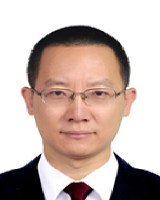检测到您当前使用浏览器版本过于老旧,会导致无法正常浏览网站;请您使用电脑里的其他浏览器如:360、QQ、搜狗浏览器的极速模式浏览,或者使用谷歌、火狐等浏览器。
 下载Firefox
下载Firefox
检测到您当前使用浏览器版本过于老旧,会导致无法正常浏览网站;请您使用电脑里的其他浏览器如:360、QQ、搜狗浏览器的极速模式浏览,或者使用谷歌、火狐等浏览器。
 下载Firefox
下载Firefox
全校公开讲座
英文摘要:
Numerous psychophysical experiments have shown that human subjects integrate information from different sensory modalities in a statistically optimal or near optimal way to improve behavioral performance, yet the underlying neural mechanisms remain unclear. In our laboratory, we train rhesus monkeys to judge self-motion, i.e. heading directions based on three cues: optic flow only, inertial motion only and the combination of the both. After trained, the animals can integrate the two cues optimally, in a Bayesian sense, to improve heading estimate. With this behavioral model at hand, we record from neurons in multiple areas in macaque brain including both sensory cortices and sensory-motor transformation areas. In particular, we investigate how visual and vestibular heading information is represented in sensory cortices, as well as how the sensory evidence may be accumulated by the downstream decision areas across time and modalities to optimize the behavioral output. Our studies may place important constraints on theoretical considerations for neural basis of multisensory integration and multisensory decision-making.
主讲人介绍:

Dr. Yong Gu obtained his B.S. degree at Xiamen University, 1993-1997. Studying between 1997 and 2002, Dr. Gu obtained his Ph. D. degree at the Institute of Biophysics, Chinese Academy of Sciences (CAS), Beijing. After 2002, Dr. Gu did postdoctoral research at Washington University in St. Louis, School of Medicine, U.S.A. Dr. Gu joined the Institute of Neuroscience, CAS in 2011 as a Principle Investigator and Head of the Laboratory of Spatial Perception. Dr. Gu’s research mainly focuses on the neural mechanisms underlying vestibular and visual integration for multisensory self-motion perception during spatial navigation.
欢迎各位老师同学积极参加!